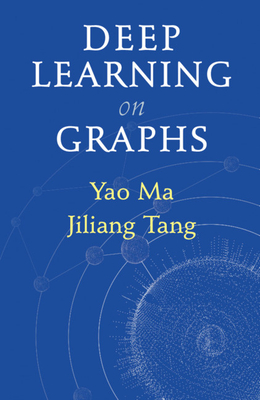Topology Design of Robot Mechanisms (Springer Tracts in Mechanical Engineering)
暫譯: 機器人機構的拓撲設計 (Springer Tracts in Mechanical Engineering)
Ting-Li Yang, Anxin Liu, Huiping Shen, LuBin Hang, Yufeng Luo, Qiong Jin
- 出版商: Springer
- 出版日期: 2018-01-30
- 售價: $4,450
- 貴賓價: 9.5 折 $4,228
- 語言: 英文
- 頁數: 236
- 裝訂: Hardcover
- ISBN: 9811055319
- ISBN-13: 9789811055317
-
相關分類:
機器人製作 Robots
海外代購書籍(需單獨結帳)
商品描述
This book focuses on the topology theory of mechanisms developed by the authors and provides a systematic method for the topology design of robot mechanisms.
The main original theoretical contributions of this book include:
A. Three basic concepts
· The “geometrical constraint type of axes” is introduced as the third element of the topological structure of a mechanism. When it is combined with the other two elements, the kinematic pair and the connection of links, the symbolic expression of the topological structure is independent of the motion positions (except for the singularity positions) and the fixed coordinate system (Chapter 2).
· The position and orientation characteristic (POC) set is used to describe the POC of the relative motion between any two links. The POC set, derived from the unit vector set of the velocity of a link, is only depend on the topological structure of a mechanism. Therefore, it is also independent of the motion positions and the fixed coordinate system (Chapter 3).
· The single open chain (SOC) unit is the base unit of the topological structure used to develop the four basic equations of the mechanism topology (Chapters 2, 4–6).
B. The mechanism composition principle based on the SOC units
This book proposes a mechanism composition principle, based on the SOC units, to establish a systematic theory for the unified modeling of the topology, kinematics, and dynamics of mechanisms based on the SOC units (Chapter 7).
C. Four basic equations• The POC equation of serial mechanisms with 10 symbolic operation rules (Chapter 4).
• The POC equation of parallel mechanisms with 14 symbolic operation rules (Chapter 5).
• The general DOF formula for spatial mechanisms (Chapter 6).• The coupling degree formula for the Assur kinematic chain (Chapter 7).
D. One systematic method for the topology design of robot mechanisms (Chapters 8–10)
Based on the three basic concepts and the four basic equations addressed above, this book puts forward a systematic method for the topology design of parallel mechanisms, which is fundamentally different from all existing methods. Its main characteristics are as follows:• The design process includes two stages: the first is structure synthesis, which derives many structure types; the second involves the performance analysis, classification and optimization of structure types derived from the first stage.
• The design operation is independent of the motion positions and the fixed coordinate system. Therefore, the proposed method is essentially a geometrical method, which ensures the full-cycle DOF and the generality of geometric conditions of mechanism existence.
• Each individual design step follows an explicit formula or the guidelines for design criteria, making the operation simple, feasible and reproducible. In addition, the topology design of the SCARA PMs is studied in detail to demonstrate the proposed method (Chapter 10).
商品描述(中文翻譯)
本書專注於作者所發展的機構拓撲理論,並提供機器人機構拓撲設計的系統方法。
本書的主要原創理論貢獻包括:
A. 三個基本概念
· “幾何約束類型的軸”被引入作為機構拓撲結構的第三個元素。當它與其他兩個元素,即運動對和連桿的連接結合時,拓撲結構的符號表達式獨立於運動位置(除了奇異位置)和固定坐標系統(第2章)。
· 位置和方向特徵(POC)集用於描述任意兩個連桿之間相對運動的POC。POC集源自連桿速度的單位向量集,僅依賴於機構的拓撲結構。因此,它也獨立於運動位置和固定坐標系統(第3章)。
· 單一開鏈(SOC)單元是用於發展機構拓撲的四個基本方程的基礎單元(第2章、第4-6章)。
B. 基於SOC單元的機構組成原則
本書提出了一種基於SOC單元的機構組成原則,以建立一個系統理論,統一建模基於SOC單元的拓撲、運動學和動力學(第7章)。
C. 四個基本方程
• 串聯機構的POC方程,具有10條符號運算規則(第4章)。
• 並聯機構的POC方程,具有14條符號運算規則(第5章)。
• 空間機構的一般自由度(DOF)公式(第6章)。
• Assur運動鏈的耦合度公式(第7章)。
D. 機器人機構拓撲設計的一種系統方法(第8-10章)
基於上述三個基本概念和四個基本方程,本書提出了一種並聯機構的拓撲設計系統方法,這與現有的所有方法根本不同。其主要特點如下:
• 設計過程包括兩個階段:第一階段是結構綜合,推導出多種結構類型;第二階段涉及對第一階段推導出的結構類型進行性能分析、分類和優化。
• 設計操作獨立於運動位置和固定坐標系統。因此,所提出的方法本質上是一種幾何方法,確保了全循環自由度和機構存在的幾何條件的普遍性。
• 每個單獨的設計步驟遵循明確的公式或設計標準的指導方針,使操作簡單、可行且可重複。此外,對SCARA並聯機構的拓撲設計進行了詳細研究,以展示所提出的方法(第10章)。
























